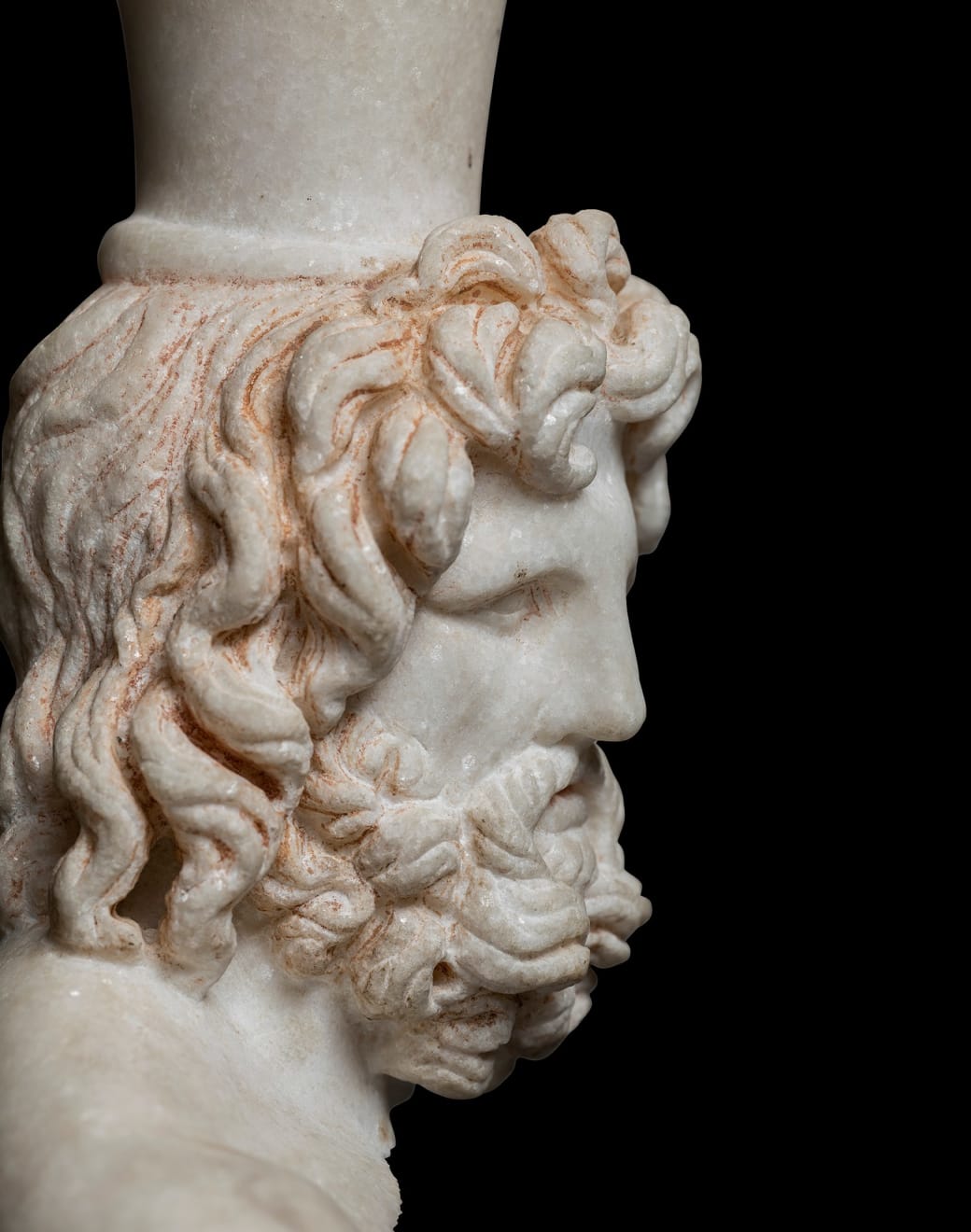Egyptian
A Greek marble bust of Serapis, Hellenistic Period, circa 2nd - 1st century BC
Marble
Height: 17.5 cm
Further images
The bust is preserved down to the shoulders and depicts the god with his head turned to his right. Serapis is shown with his hair and beard of flowing curls,...
The bust is preserved down to the shoulders and depicts the god with his head turned to his right. Serapis is shown with his hair and beard of flowing curls, crowned with a modius. The smoothly polished face is carved with strong features including deep-set eyes beneath the brow, a creased forehead and a straight nose. The slightly open mouth gives a glimpse of the teeth. There are traces of red polychromy remaining in the hair, eyes, and mouth.
Provenance
With Alkis Matheos, Paris, prior to 1976Private collection, Lugano, Switzerland, 1977
With Galerie Nefer, Zurich, 1991
Private collection, Switzerland
Exhibitions
On Loan: Antikenmuseum Basel & Sammlung Ludwig, 1998 - 2022Rome, Chiostro del Bramante, Cleopatra. Roma e l’incantesimo dell’Egitto, 12 October 2013 – 2 February 2014
Paris, Pinacothèque de Paris, Le Mythe Cléopâtre, 10 April 2014 – 7 September 2014
Literature
The Cult of Serapis was promoted by Ptolemy I Sotar as a means of syncretising worship between his Egyptian and Greek subjects. The god combined the Egyptian deity Osiris and the Apis Bull (the sacred bull of Memphis) with attributes and functions of the Greek gods Zeus, Dionysus, Helios, Hades, and Asklepios.
Ptolemy built the Serapeum in Alexandria as the cult centre of the new god and this depiction is derived from the renowned cult statue of Serapis from that temple, which is attributed to the 3rd century BC sculptor, Bryaxis. For discussion of the Bryaxis type, see A. Stewart, Greek Sculpture: An Exploration, New Haven and London, 1990, vol. II, no. 633.
Publications
G. Gentili (ed.), Cleopatra. Roma e l’incantesimo dell’Egitto, Skira, Milano, 2013, no. 24, p. 109, p. 254M. Restellini (ed.), Le Mythe Cléopâtre, Pinacothèque de Paris, 2014, p. 84, no. 31
1
of
14









